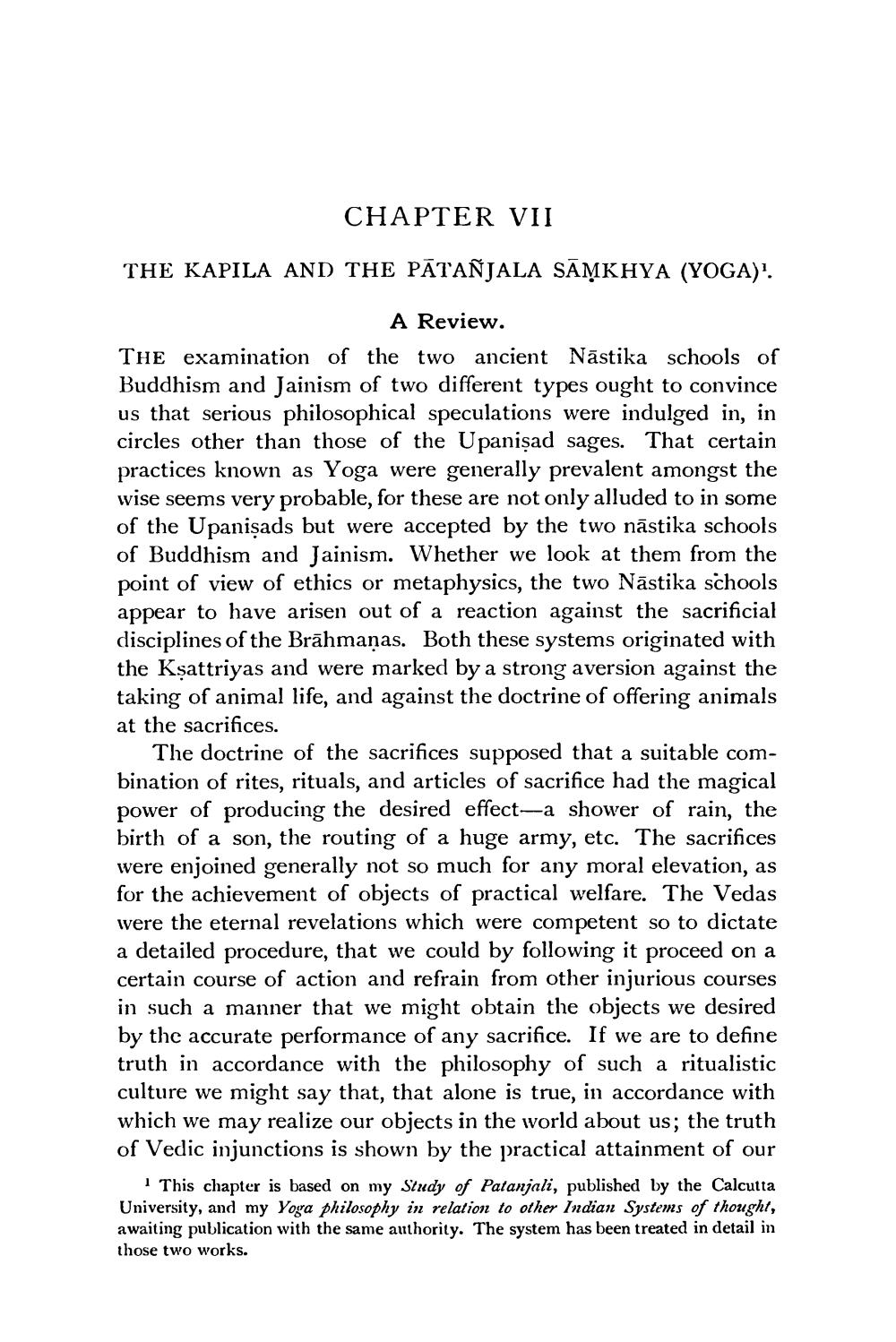________________
CHAPTER VII
THE KAPILA AND THE PĀTAÑJALA SĀŅKHYA (YOGA)'.
A Review. The examination of the two ancient Nāstika schools of Buddhism and Jainism of two different types ought to convince us that serious philosophical speculations were indulged in, in circles other than those of the Upanişad sages. That certain practices known as Yoga were generally prevalent amongst the wise seems very probable, for these are not only alluded to in some of the Upanişads but were accepted by the two nāstika schools of Buddhism and Jainism. Whether we look at them from the point of view of ethics or metaphysics, the two Nāstika schools appear to have arisen out of a reaction against the sacrificial disciplines of the Brāhmaṇas. Both these systems originated with the Kşattriyas and were marked by a strong aversion against the taking of animal life, and against the doctrine of offering animals at the sacrifices.
The doctrine of the sacrifices supposed that a suitable combination of rites, rituals, and articles of sacrifice had the magical power of producing the desired effect-a shower of rain, the birth of a son, the routing of a huge army, etc. The sacrifices were enjoined generally not so much for any moral elevation, as for the achievement of objects of practical welfare. The Vedas were the eternal revelations which were competent so to dictate a detailed procedure, that we could by following it proceed on a certain course of action and refrain from other injurious courses in such a manner that we might obtain the objects we desired by the accurate performance of any sacrifice. If we are to define truth in accordance with the philosophy of such a ritualistic culture we might say that, that alone is true, in accordance with which we may realize our objects in the world about us; the truth of Vedic injunctions is shown by the practical attainment of our
This chapter is based on my Study of Patanjali, published by the Calcutta University, and my Yoga philosophy in relation to other Indian Systems of thought, awaiting publication with the same authority. The system has been treated in detail in those two works.




